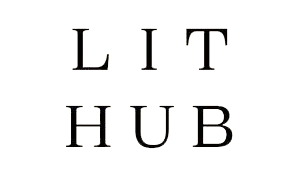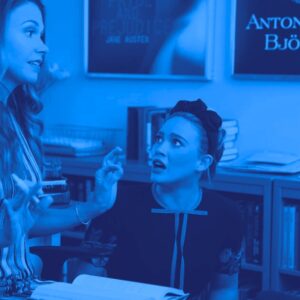
Writing With Four Hands: Anne and Claire Berest on Writing a Novel Together as Sisters
A Conversation Between the Authors of “Gabriële” (As Translated by Michael Reynolds)
As any author will tell you, writing a book with four hands is not easy. Egos, vulnerabilities, and questions of control all come into play. Does being sisters simplify matters? Or, on the contrary, complicate them?
For us, such an intimate exchange as writers is possible only because we are sisters, because we have known each other forever. It may be difficult to accept the other’s constant questioning, but it becomes a wonderful exercise.
You are never alone before the page but always together. The other’s perspective elevates, it can serve as a corrective. It gives the writing incredible power.
The sisterly collaboration that produced Gabriële, a book about our great-grandmother, Gabriële-Buffet-Picabia, lasted more than three years, and it went through many phases.
*
First Shock
Our mother’s name is Lélia, her surname is that of the famous painter, Francis Picabia. But she never spoke about him, or her family name.
For us, such an intimate exchange as writers is possible only because we are sisters, because we have known each other forever.
For our entire childhood, that famous name remained a mystery. Then, one day, we went to a major Picabia exhibition at the Museum of Modern Art in Paris. We would barely have been twenty years old. We found ourselves in a crowd of invited guests, chic Parisians, the entire Parisian cocktail scene….It was all very new to us.
–Claire, are you okay?
–No, I feel a bit dizzy.
–Why?
–Our great-grandfather painted all this, this… mess!
–Come see this painting! Look!
We stopped in front of a painting, staring at it longer than the others. The face of a Spanish woman. The glint from the framing glass. She looked like Claire. You could see her face superimposed on it, eyes on eyes. Like a family portrait.
–Your face is the same shape. The eyes are the same, that bemused gaze.
At that moment, we turned around, interrupted by a murmuring in the crowd. Our mother, Lélia, had lit an illicit cigarette in the museum, right in the middle of the show.
–Mom! You’re going to get kicked out.
–Oh, it’s fine….we’re among family! Replied our mother Lélia, as rebellious as ever.
Why, before that day, had she never spoken about this painter grandfather? People tend to be proud of their famous ancestors, but not her.
One day, perhaps we’d feel the need to investigate this fissure, but that day would not arrive for another fifteen years, at a time when both my sister and I had become writers.
*
How Ideas Come About…
Years later, each with our own books out in the world, we still harbored dreams of one day writing one together. This idea reverberated like an echo of our childhood, when we had played together with dolls, with toy cars, and later, with the books from our library—our favorite game was “librarian.”
Writing something with four hands seemed as if it would capture the same dynamic of play, the same joyful, vital, communicative energy we longed to recapture.
The question, however, was one of subject: what would we write about? We decided that the subject had to impose itself, becoming the obvious, undeniable choice.
The long-awaited sign appeared in the middle of a hot summer. Anne happened to be reading a recently published biography of the conceptual artist Marcel Duchamp. Mid-read, she called Claire.
–I think I’ve had an epiphany.
–What? What are you talking about?
–Our book! I think I’ve found its subject.
–I’m listening.
–Mom’s grandmother, Gabriële, did you know she was Marcel Duchamp’s mistress?
–No kidding…
–They had an affair. And, I think, a threesome, with Francis.
–I only ever saw her as a very old lady. But, of course, even centenarians were young once.
–From what I’m reading, she was simply incredible, the quintessential modern woman.
When the summer ended, we got to work. We knew nothing about Gabriële. Everything had to be discovered. She had been waiting for decades to reveal her secrets to us.
*
How Not to Give Birth in a Library
The history of art in the twentieth century was shaped by men—the masculine figure of the artist glorified, and women relegated to the shadows. Like so many others, Gabriële had been erased from the narrative.
It was necessary to investigate, to grasp hold of glimpses of her in dozens of books, letters, and archives, to find the fragments of her existence that had been scattered here and there. And, from these bits and pieces, to reconstruct her portrait.
Every morning, like two diligent students, we met at the National Library of France to work. It was quite comical because we were both pregnant. The vast corridors of the library seemed endless, and every day, we joked about whether Anne, whose pregnancy was further along, would manage to make her way down them without her water breaking along the way.
–I’m afraid I’ll ruin the library carpet.
–Wait! We still have at least thirty books to get through. Don’t give birth now.
–But my feet are swollen, I can’t walk anymore.
–Don’t worry. If I have to, I’ll roll you like a ball to the exit.
Then we would burst out laughing.
We gave birth to a book, written with four hands, and to two daughters, who continue Gabriële’s lineage. Gabriële, our book, is dedicated to them.
*
Finding a Common Voice
After more than two years of research, we pieced together the entire puzzle of Gabriële Buffet’s life. Then it was time to write.
Decoding the archives, interviewing art historians, uncovering traces of her presence in the lives of her illustrious contemporaries had been a blast. We had created a shared document that contained all our notes—it was over a thousand pages long.
–And now, how do we write it? How do we bring Gabriële back to life?
–Should we write a chapter each?
–No. I feel that approach would be wrong.
–We can’t just work side by side…
–We need to merge our voices.
–Yes, to find another voice, one that is neither yours nor mine.
We had to forget what we knew about writing and invent a new method. Each of us began writing moments of Gabriële’s life, in no particular order, and sent them to the other. Then the other would rewrite everything, change, suggest, and send it back.
Once it had been returned, the original sender would, in turn, write, suggest, and so on. We went back and forth like this dozens of times on a single passage. It was like literary ping-pong. The goal was that, by the end of this process, we would no longer remember who had started or who had written what.
The text that was born of this process would thus be a pure blend of us both. And, it would be a third voice, that of Gabriële.
*
A Rewarding Experience
Sharing the writing process in this way is incredibly enriching—we loved learning from each other.
–I think, says Claire, that Anne’s approach to writing is more organized than mine; she’s a workhorse, I was very impressed by her method. She is so imaginative, full of ideas. She’s never at a dead end, always finding solutions. And she’s very funny! I learned a lot working with her; she made me stronger.
Sharing the writing process in this way is incredibly enriching—we loved learning from each other.
–What I loved, says Anne, is the magnetic relationship Claire has with language, with style. She shapes words and sentences as if she were modeling clay. She also has very strong intuitions about the tone that a given passage should take or if it lacks propulsion.
After writing Gabriële, we felt the need to return to our individual workshops. And yet, we are both eager to write something together again someday.
(Translated by Michael Reynolds)
___________________________

Gabriële by Anne and Claire Berest and in translation by Tina Kover is available via Europa.



















